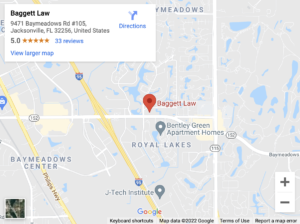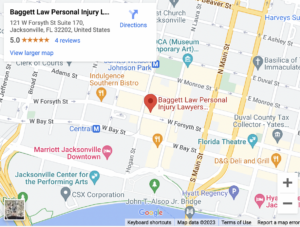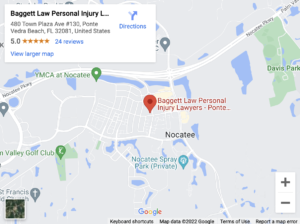
Anesthetics make some necessary procedures possible. For example, surgery on your abdomen or chest can happen safely and comfortably only with anesthetics.
At the same time, anesthetics are powerful drugs. Drug companies design them to paralyze your nerves and sedate your brain. When given in the wrong doses, they can stop your heart and put you into a coma.
Here are some facts about anesthesia injuries and how to get compensation for them.
What is the Purpose of Anesthetics?

Your nervous system serves several purposes.
Your brain controls some of your muscles and organs without any conscious thought.
These autonomic signals control essential functions like:
- Breathing
- Heartbeat
- Digestion
- Reflexes
Critically, some pain reflexes happen due to autonomic signals. When a surgeon touches your organs or muscles without anesthesia, they can twitch or move, making the surgery more difficult and dangerous. Thus, one purpose of anesthetics is to paralyze your reflexes without paralyzing your heart or other vital functions.
Your brain also generates motor signals. These signals require conscious thought. When you want to move your arm, your brain knows which muscles to contract or relax to perform the movement you want.
Any voluntary movements could put you in danger during surgery and make the surgeon’s job much more difficult — if not impossible. Anesthetics are used to keep you from moving during surgery.
Your body sends sensory signals to your brain. These sensory signals help your brain understand the state of your body and the environment around you.
These sensory signals include pain. Pain tells your body that something is wrong and that you need to react. During an invasive procedure, numbing your body from pain signals will keep you comfortable and prevent your body from reacting to any pain you would have experienced.
Finally, your conscious brain perceives the world around you. It analyzes sensory input and makes memories.
During an invasive procedure, perceiving what is happening to you and remembering it will probably traumatize you. Doctors use anesthetics during some procedures to sedate you so you can sleep through the procedure instead of seeing, hearing, and remembering everything that happened to you.
What Are the Types of Anesthetics?
Doctors use three types of anesthetics:
Local Anesthetics
A local anesthetic only blocks nerve sensations. You can still control your body, including the area anesthetized. You will also remain awake and conscious of the procedure.
Doctors and dentists use local anesthetics for mildly painful procedures that they can quickly complete. Procaine — the generic name for Novocaine — is a local anesthetic used by dentists during dental procedures.
Regional Anesthetics
A regional anesthetic blocks pain and other nerve sensations like pressure or temperature. Again, regional anesthetics do not paralyze you and will not sedate you.
Regional anesthetics affect an entire region of your body. The anesthesiologist achieves this effect by administering the regional anesthetic to a nerve root.
As your spinal cord passes through your spine, it branches off at each vertebra. These nerve roots carry the nerve signals for an entire region of the body. When an anesthesiologist injects anesthetics near a nerve root, the entire region served by the nerve root will go numb.
When pregnant women receive an epidural block during labor and delivery, the anesthesiologist administers a regional anesthetic to the nerve root carrying signals for the patient’s pelvic region.
General Anesthetics
General anesthetics combine powerful nerve-blocking agents with a sedative. Between the two drugs, the anesthesiologist can paralyze you, block pain signals from reaching your brain, and put your brain to sleep.
Doctors use general anesthesia for procedures that:
- Take a long time
- Are highly invasive or traumatic
- Cause a lot of pain
During general anesthesia, the anesthesiologist must monitor your vital signs. The anesthesiologist must keep you sedated so you do not wake up during the procedure. But the doctor cannot sedate you too deeply, or you might slip into a coma.
Similarly, the anesthesiologist must keep you paralyzed. But the doctor must keep your lungs breathing and your heart beating.
How Do Anesthesia Injuries Happen?
Anesthesia injuries take a few different forms and have a few different effects. Anesthesia injuries include:
Wrong Drug
Drug mix-ups can have disastrous consequences. Administering the wrong drug to someone with an allergy can trigger an allergic reaction. If the allergic reaction triggers anaphylaxis, the patient’s blood pressure, pulse, and breathing could slow or stop.
Wrong Dose
Administering the wrong dose of a drug can lead to an overdose or an underdose.
An overdose happens when a doctor administers too much anesthetic to a patient.
This can happen due to:
- Miscalculating the dose
- Measuring the dose incorrectly
- Receiving the wrong concentration from the pharmacy
An overdose of general anesthetics can cause a coma by shutting down the brain. It can also cause death by paralyzing the heart or the muscles that control breathing. An overdose of local or regional anesthetics can permanently damage the nerves.
An underdose happens when the patient does not receive enough anesthetics. An underdose can result in the patient waking up during the procedure.
It can also cause a condition called anesthetic awareness. In anesthetic awareness, the general anesthetic paralyzes the patient but fails to sedate the patient. As a result, the patient remains awake and aware during the procedure.
Improper Monitoring
An anesthesiologist must monitor the patient during general anesthesia. The patient’s blood pressure, heart rate, respiration, oxygen levels, temperature, and other vital signs can tell an anesthesiologist the patient’s state. The anesthesiologist can ensure the patient remains safely sedated.
If the anesthesiologist neglects to monitor the patient, the patient’s lungs or heart could stop. Once that happens, the doctor only has minutes to restore breathing and circulation before the patient suffers permanent brain damage.
How Do You Recover Damages for an Anesthesia Injury?
To recover compensation for an anesthesia injury, you must prove that the healthcare provider committed medical malpractice. In Florida, this means the doctor failed to provide the level of care, skill, and treatment expected of a reasonable professional in the same circumstances.
Not every adverse outcome constitutes medical malpractice. Some tragic outcomes happen without anyone committing an error. But when a medical professional commits an error, Florida gives the injured patient the right to seek compensation.
Anesthesia injuries can range from minor irritation to coma or death. Some anesthesia injuries can leave you permanently disabled and unable to earn a living. Contact the Baggett Law Personal Injury Lawyers to schedule a free consultation to discuss the compensation you can seek for your anesthesia injury.




